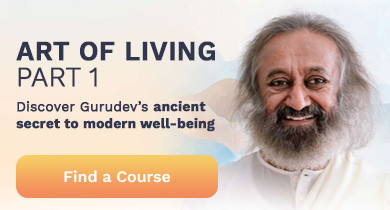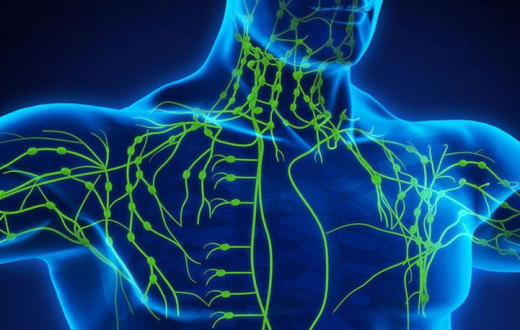By Anuradha Gupta
Want to start off your new year resolution with exercising the right way? Use an Ayurvedic perspective and exercise according to your doshas.
Regular physical activity is one of the most important things we can do for our health according to the CDC! Yet 80% of Americans don’t exercise enough and many feel they’re too busy or stressed. How can we make time for exercise while sure it’s not a drag (pun not intended!)
Around 400 BCE, Greek physician Hippocrates said, “If we could give every individual the right amount of nourishment and exercise, not too little or too much, we would’ve found the safest way to health.” CDC spells out the benefits of regular physical activity; it improves brain health, weight management, reduces the risk of cardiovascular diseases, Type 2 Diabetes and Metabolic Syndrome, some types of cancers, strengthens bones and muscles, improves our ability to do daily activities, prevents falls and increases our chances of living longer. Exercise also delays cognitive decline and enhances mental health.
If you’re looking at physical exercise just to say, lose weight, that’s a laudable goal but may not be sustainable. Many people include regular exercise in their New Year Resolutions but research has shown whether they succeed or not depends on something as simple as framing them as ‘approach rather than avoidance goals’. Clearly, focusing on health benefits makes all the difference!
How can Ayurveda, a holistic, natural form of complementary medicine that advocates prevention and lifestyle management help you frame your exercise goals?
Ayurvedic View of Exercise
The earliest record of a medical practice discussing exercise is from 5,000 years ago, in the Ayurvedic root text Charaka Samhita. Exercise or Vyayam is defined as that which produces stability and strength, lending lightness, the ability to work, stay firm, gain luster, withstand thirst, fatigue, heat and cold, develop mental resilience, detox and stimulate the Agni or digestive and metabolic fire.
Exercise is advised as an essential part of the daily regimen or Dinacharya. It is considered a means of enhancing immunity, balancing the Doshas or energy principles, preventing disease, improving longevity, and graduated exercise is used as a tool in recovery or management of ailments like diabetes, obesity, and depression. Ayurveda focuses on the mind-body connection; it stresses that exercise leads to mental stability and enhanced tolerance of psychological stressors, what we now acknowledge as the feeling of wellbeing from increased levels of serotonin and endorphins.
Ayurveda believes that one size doesn’t fit all and everyone requires a different exercise regimen! Customizing your exercise resolutions would help you stick to your goals and optimize healing.
Customized Exercise
Understanding your Ayurvedic constitution or Prakriti can help you decide how much and what kinds of exercise to do (find out your Ayurvedic Constitution here). Here are the principals to follow:
Doshas govern our structures, functions, tendencies, and affinities. People with Vata dosha dominating generally have lesser body stamina and strength compared to Pitta dosha dominant people who have moderate stamina and people with dominant Kapha dosha who have optimal stamina.
Do follow exercise guidelines for the Dosha dominating in your Prakriti or Vikrati (imbalance).
Honor seasonal variations or Ritucharya (Vata dominates during fall and early winter, Kapha during late winter and spring, and Pitta during summer).
Be mindful of your stage of life; kids are in the Kapha stage and need rigorous yet fun exercise, younger people are in the Pitta, and the elderly, in the Vata stage of life.
Yoga: Charaka Samhita advocated exercise for the body and yoga for the mind and spirit in its original intent. Today, yoga therapy is a powerful tool used for preventative health and to manage many illnesses and injuries. It can be done in a meditative fashion or as an aerobic practice like a few rounds of quick sun salutations. However, like everything, Ayurveda customizes yoga (read more here).
Do include gentle yoga or stretching before and after your daily exercise to warm up and cool down.
Complement exercise with adequate sleep and nutrition and start exercise with self-massage or Abhyanga whenever possible. Enjoy yourself and focus on body and breath while exercising to shift attention from fight-flight to the healing parasympathetic (rest-digest) nervous system.
Vata dosha
Vata body types (composed of air and ether) are creative, agile, enthusiastic, and restless, with variable energy, digestive strength, and a tendency to get depleted but they love everything fast-paced! Vata needs to focus on grounding and following a routine, on ‘less is more’, ‘form rather than speed’, and strengthening bones and muscles (to prevent bone density issues and injuries). They need to be mindful not to overdo exercise either with time or intensity.
Types of exercise: Try yoga that is meditative, balancing, strengthens digestion and the pelvic floor, 20-30 min nature walks, Tai Chi, dancing, martial arts, low-intensity exercises, lunges, squats, using resistance bands, and sports like badminton and golf. A cardio routine can be balanced with strength training. Take rest days regularly to recuperate.
Pitta dosha
Pitta body types (composed of water and fire) are energetic, athletic, competitive, and goal-oriented with good stamina but a tendency to seek perfection or push limits. They can naturally have a higher body temperature. Their exercise should be more relaxing and should be avoided during hot, humid conditions, for instance in the middle of a scorching summer day. While they tend to be strong, muscular, and good at all sports, they should be mindful about not wearing themselves out, getting overly-competitive, overheating, and getting angry and irritable.
Types of exercise:
Yoga, Pilates to strengthen the core, hiking, long nature walks, gardening, cycling, swimming, surfing and sports like basketball and hockey are great exercises for Pitta. Pitta’s can be drawn to boot camps and CrossFit which can be balanced by a relaxing yoga sequence! Take rest days for sure.
Kapha dosha
Kapha body (composed of earth and water) types are easy-going, nurturing, with a good and steady energy and physical strength but a tendency to slack off on exercise. They are prone to lethargy, congestion, and being overweight and exercise can improve their metabolism. They do better with exercising in teams or setting goals with other people where they can be great motivators. They have great endurance once they get started!
Types of exercise:
Running, long-distance walking, fast-paced and high-intensity exercises, gymnastics, cycling, aerobics, jump roping, weight-lifting, rowing, dancing, Zumba, incorporating push-ups, planks, and sports like tennis and soccer help keep Kapha in balance. If weight loss is a goal, be mindful about excess strength training and balance it with aerobics. Kapha’s also need to switch their routine around to avoid monotony and keep things fun and challenging.
It’s all about balance
Ayurveda urges balance in exercise to avoid depletion; an indicator is to stop just about when you start sweating, respiration increases and you feel lightness in the body.
A recent Ayurvedic study showed that blood sugar levels and lipid profile have a strong association with Prakriti and exercise, corroborating health benefits and customization of exercise. Intense exercise is contraindicated during debility like fever, injuries, asthma, hemorrhoids or while menstruating, during pregnancy, and in people older than 70. Walking is recommended for diabetes and for the elderly. Interesting fact; in advanced stages of diabetes (Prameha), Ayurveda advises physical exercise and sports (and 5,000 years back also advised wrestling, riding elephants and horses, traveling on foot, moving around, and feats of archery!)
For athletes, research has shown that herbs like Ashwagandha significantly improve aerobic performance, however, do consult an Ayurvedic practitioner before taking any herbs. Be mindful about your state of health and injuries or imbalances while embarking upon an exercise regimen.
The founder of Art of Living, Gurudev Sri Sri Ravi Shankar asserts that the body needs exercise and effort for its upkeep while the mind needs meditation. Meditation helps us de-stress and improves our ability to make better lifestyle choices – like regular exercise!
If this has inspired you to plunge into a holistic fitness routine, I am excited to invite you to participate in a 16-Day Yoga and Meditation Challenge for FREE. Find the details here.
SKY Breath Meditation - the best for mental fitness
Research on SKY breath meditation backs it for its profound effect on mental health. I’m glad to invite you to a free meditation session, Beyond Breath, where you will learn more about SKY Breath Meditation and also a guided breathing and meditation session with a live instructor.
Anuradha Gupta is an Engineer, MBA, writer, and Ayurvedic Wellness Practitioner. She has a corporate background and volunteers for Art of Living and other nonprofits. You can find her on Facebook or LinkedIn.
Disclaimer: This content on the Art of Living Blog is not intended to be a substitute for professional medical advice, diagnosis, or treatment. Always seek the advice of your physician or other qualified health providers with any questions you may have regarding a medical condition, Any links to third-party websites are provided as a convenience only and the Art of Living Blog is not responsible for their content.





























